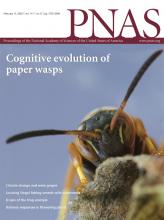|
Autors/es
Zhang, Yu; Pfeiffer, Anne; Tepperman, James M.; Dalton-Roesler, Jutta; Leivar, Pablo ; Gonzalez Grandio, Eduardo; Quail, Peter H. ; Gonzalez Grandio, Eduardo; Quail, Peter H.
|
Abstract
Light-environment signals, sensed by plant phytochrome photoreceptors, are transduced to target genes through direct regulation of PHYTOCHROME-INTERACTING FACTOR (PIF) transcription factor abundance and activity. Previous genome-wide DNA-binding and expression analysis has identified a set of genes that are direct targets of PIF transcriptional regulation. However, quantitative analysis of promoter occupancy versus expression level has suggested that unknown “trans factors” modulate the intrinsic transcriptional activation activity of DNA-bound PIF proteins. Here, using computational analysis of published data, we have identified PSEUDO-RESPONSE REGULATORS (PRR5 and PRR7) as displaying a high frequency of colocalization with the PIF proteins at their binding sites in the promoters of PIF Direct Target Genes (DTGs). We show that the PRRs function to suppress PIF-stimulated growth in the light and vegetative shade and that they repress the rapid PIF-induced expression of PIF-DTGs triggered by exposure to shade. The repressive action of the PRRs on both growth and DTG expression requires the PIFs, indicating direct action on PIF activity, rather than a parallel antagonistic pathway. Protein interaction assays indicate that the PRRs exert their repressive activity by binding directly to the PIF proteins in the nucleus. These findings support the conclusion that the PRRs function as direct outputs from the core circadian oscillator to regulate the expression of PIF-DTGs through modulation of PIF transcriptional activation activity, thus expanding the roles of the multifunctional PIF-signaling hub.
|

WoS
Scopus
Altmetrics
  
|
|
Publicació
Proceedings of the National Academy of Sciences of the United States of America, 27 Januray 2020, v.117, n.6, p.3261-3269
|
